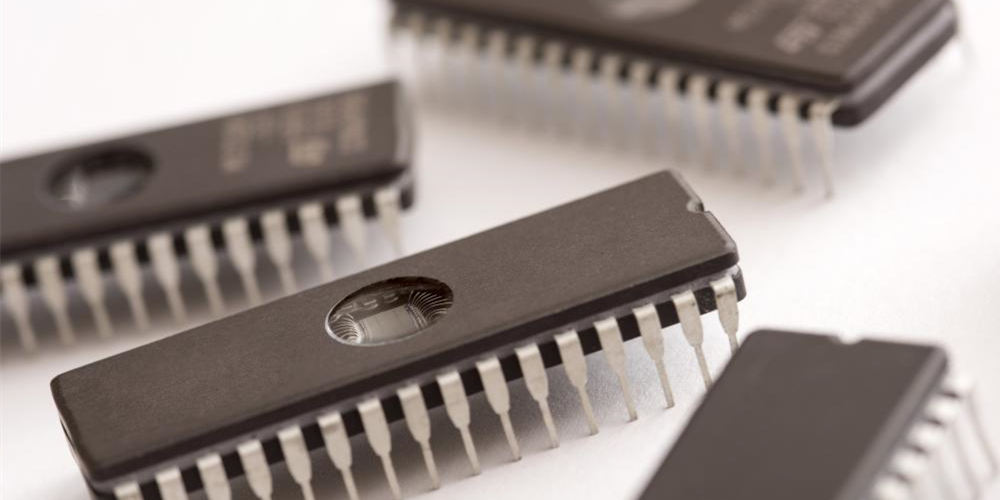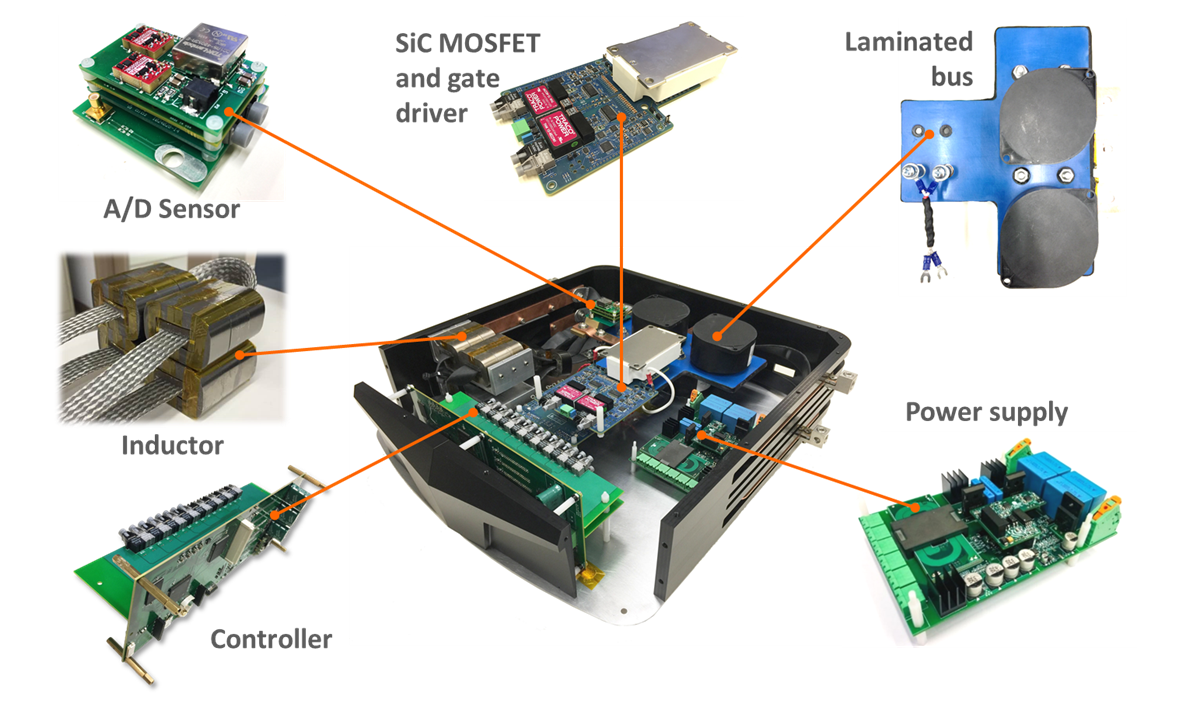The Building Blocks of Modern Electronics
The Invention of the Transistor
In the late 1940s, scientists at Bell Labs were experimenting with various semiconductor materials in an effort to develop a solid-state replacement for vacuum tubes in electronics. One such material was germanium, which they found could exhibit some interesting electrical properties when tiny amounts of impurities were introduced. In 1947, three scientists - John Bardeen, Walter Brattain, and William Shockley - achieved a major breakthrough. They constructed the first transistor out of a single crystal of germanium, revolutionizing electronics and paving the way for modern digital technology. For their groundbreaking work, they were awarded the 1956 Nobel Prize in Physics.
How the Transistor Works
The key to the transistor’s operation lies in controlling the flow of electrons through a semiconductor material. By placing two metal contacts on the surface of a germanium crystal with a tiny amount of impurities, Bardeen, Brattain, and Shockley were able to demonstrate that a small current applied to one contact, known as the base, could control a much larger current flowing between the other two contacts, called the emitter and collector. This effect, known as the transistor effect, allowed the transistor to amplify or switch electronic signals, functions previously only possible with bulky and fragile vacuum tubes.

The Advantages of Silicon
While the first transistor was made from germanium, scientists quickly realized silicon had some important advantages that made it better suited for electronics. Silicon was more abundant than germanium, allowing for larger-scale production. It was also more physically and chemically robust than germanium, making devices more durable. Perhaps most significantly, silicon’s properties could be more precisely controlled through doping, introducing precise amounts of other elements like phosphorus or boron to alter its electronic behavior. This controllability was key to building more complex integrated circuits. By the late 1950s, silicon had replaced germanium as the dominant transistor material.
The Invention of the MOSFET
One major limitation of early transistors was that they required relatively large operating currents. In 1959, Mohamed Atalla at Bell Labs developed a new type of field-effect transistor that was controlled by an electric field instead of a current: the metal-oxide-semiconductor field-effect transistor, or MOSFET. The MOSFET’s operating principles allowed it to switch on and off using very low power levels. It could also be more densely packed than bipolar junction transistors, opening the door to integrated circuits with many thousands or even millions of transistors on a single microchip. This new device became a key building block driving the rapid advancement of digital electronics.
The Dawn of Integrated Circuits
With MOSFETs providing a way to pack large numbers of transistors onto a single substrate, the 1960s saw the rise of integrated circuits where multiple transistors and other components were fabricated on a single silicon chip. An integrated circuit replaced what would previously have required an entire circuit board full of discrete components with a single compact package. This approach greatly reduced cost and size while improving reliability. Some of the earliest pioneering ICs only contained a few transistors, but their potential was already obvious.
Moore’s Law and Continuous Device Scaling
In 1965, Intel co-founder Gordon Moore made the observation that the number of transistors on integrated circuits had doubled every year since their invention. He predicted this trend would continue with transistors halving in size and circuit complexity doubling every year. Nearly 50 years later, Moore’s Law continues to accurately predict the exponential improvement in computing capability and reduction in cost driven by exponential device scaling. As MOSFETs and other semiconductor components are shrunk to ever smaller nanometer dimensions, it fuels continued rapid innovation in electronics.
Fundamental Device Structures
At the core of the microelectronics revolution have been advances in fabricating increasingly complex and dense arrangements of a handful of basic semiconductor device structures. Let’s explore some of these fundamental building blocks that continue to be refined over generations of scaling.
The MOSFET
As discussed, the metal-oxide-semiconductor field-effect transistor lies at the heart of modern electronics. Its three-terminal design — source, gate, and drain — allows it to control electric current by modulating the conduction channel with an electric field. Billions of MOSFETs, often only tens of nanometers in size, are integrated onto today’s computer chips.
Logic Gates
Combining MOSFETs and other devices allows the implementation of logic gates — the basic building blocks that perform functions like AND, OR, and NOT. Gates form the primitives for digital circuits to fulfill any computational task through the manipulation of binary signals. Modern silicon chips contain billions of these tiny logic functions.
Diverse Applications
While semiconductor devices originated to replace vacuum tubes in computing and communications applications, over decades of progress they have enabled technologiesacross nearly every industry. Let’s explore some of the diverse domains where semiconductors now play critical roles.
Computers and Smart Devices
From desktop PCs and servers to smartphones, tablets, and wearables, digital electronics have transformed how we work, play, and interact. Billions of people worldwide rely on semiconductor-based technologies for computing, networking, and Internet access each day. Continuous scaling now packs entire systems, with multi-core processors and specialized graphics and AI accelerators, onto chips smaller than a fingernail.
Automotive Electronics
Modern vehicles contain over 100 networked electronic control units for functions like engine control, braking, entertainment, navigation, and safety systems. Advanced driver-assistance systems use vision, radar, and LiDAR sensors powered by integrated circuits. Electrification is bringing even more semiconductors for battery management, motor control, and recharging infrastructure. Cars have become rolling computers that wouldn’t function without microchips.
Continued Advancement
After over 75 years of progress, each new generation of semiconductor devices continues to deliver exponentially better performance and efficiency. However, sustaining this pace of advancement requires ongoing innovation across materials, device structures, design methodology, and manufacturing technologies. Some of the frontiers propelling innovation forward include three-dimensional integration, new channel materials beyond silicon, spintronics, and quantum computing. With their permeation of nearly every technological domain, semiconductors will undoubtedly remain at the heart of the global innovation economy well into the future.
Beyond CMOS Scaling
As MOSFETs approach the limits of traditional scaling, innovative new devices and materials are being explored. Nanosheet transistors use ultra-thin silicon layers only a few atoms thick for superior electrostatic control. New channel materials like III-V semiconductors and 2D materials like graphene promise faster switching and lower power. Novel non-charge-based devices employ quantum effects, photonics, and even neuro-inspired architectures. Continuous advancement ensures semiconductors will continue enabling our accelerating digital world.
Conclusion
Over the past 75+ years, the development of semiconductor devices has transformed technology and society in ways few could have imagined. From the earliest vacuum tubes to today’s nanometer-scale transistors, each generation has allowed exponential improvements integrating more functionality into smaller spaces. This progress continues to accelerate innovation across industries and enrich our lives globally. Looking ahead, as new device structures and novel materials emerge, semiconductors will undoubtedly remain the cornerstone enabling our civilization’s digital future. Their future is too vast to imagine in full, but it is sure to bring wonders we have yet to conceive.
